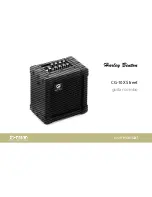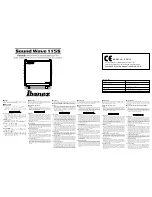
Troubleshooting Buzzes
07
1. First check the strings to see if you need to replace them. If you aren't sure, put
on a new set. Also check to be sure none of the screws in the tuning pegs have
come loose. Check the nuts on the brackets too. Often the vibration of a screw
sounds a lot like a buzz.
2. Check the action. If the clearance is less than 1/8", it is too low.
3. Fret the neck at the first fret. If it still buzzes, check the bridge. A bridge buzz
sounds like an annoying twang.
4. If the neck buzzes unfretted but doesn't buzz when fretted on the first fret, the
problem is the nut. The nut slots are cut with special tools and procedures at the
factory. You only run into nut problems if someone has tinkered with your banjo. If
the nut slot is too wide, you can fix it temporarily by loosening the string and laying a
piece of paper across the string slot. Put the string back over the slot and tighten it
so that it pulls the paper down into the slot. Tear all excess paper off, leaving only
the paper in the slot to fill the excess space temporarily, until you get a new nut. The
bottom of the string should be 1/16" above the fingerboard at the nut. If it is lower
than this, the nut slot is cut too deep. Have a competent repairman replace the nut.
5. If you have gone through all the above steps and still have buzzes, then the
problem is with the frets. Expansion and contraction of the wooden fingerboard due
to changes in humidity can cause the frets to loosen and raise up, and the strings to
buzz on high frets. Frets will will also eventually wear down with use, and buzzing
can occur when pressing the string on a worn fret if the next fret down the finger-
board toward the head is not also worn. To check the frets, lay a six-inch ruler or
straight edge on top of them and see if it rocks. If it doesn't lay flat on three or more
frets, seek professional help.










































